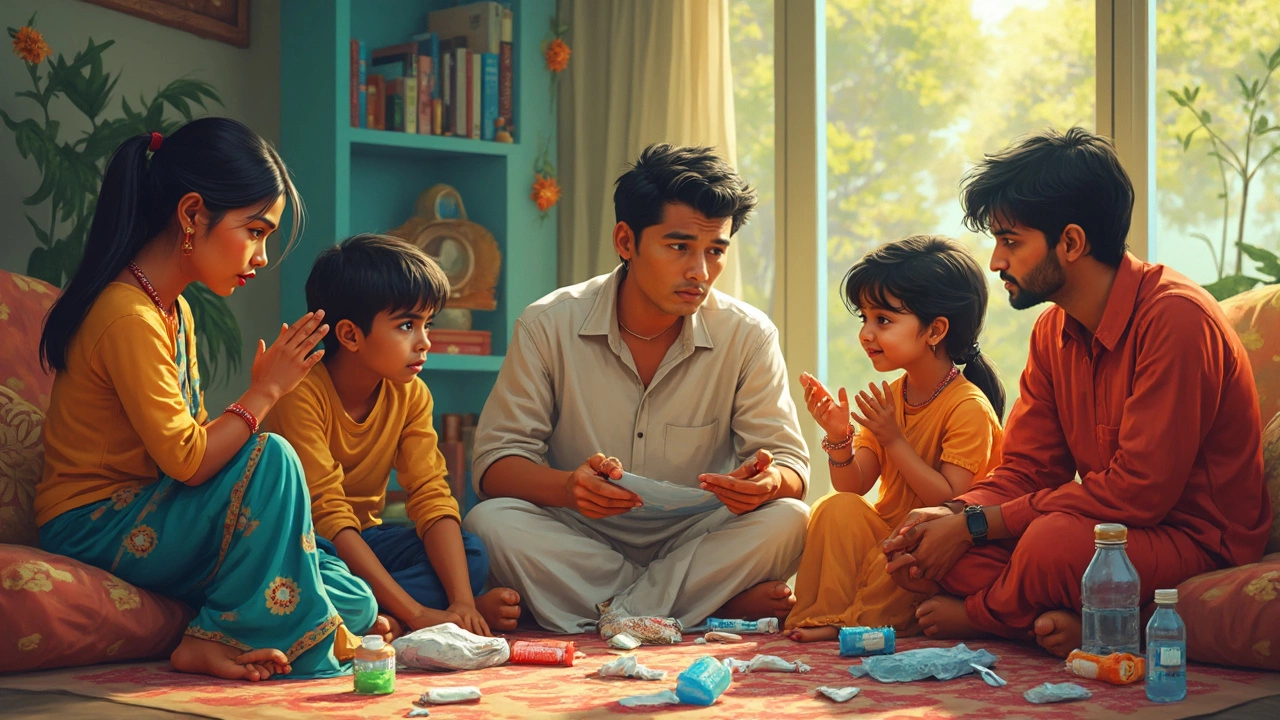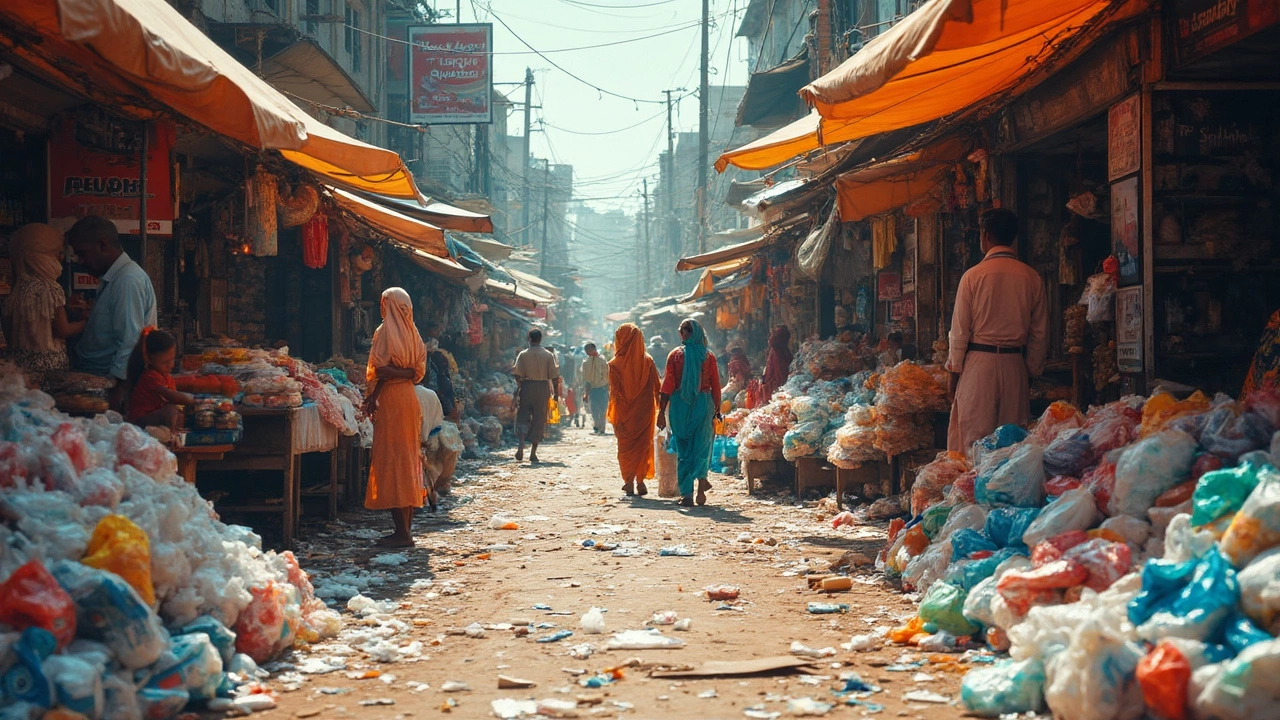So, what's the biggest single-use plastic item out there? Brace yourself—it's the ubiquitous plastic bottle. Whether it's the water bottles that fill our convenience store shelves or the soda bottles we grab for a quick refreshment, they all add up fast. Imagine this: we use over a million plastic bottles every minute worldwide. That's an insane amount of plastic!
These bottles are incredibly convenient but also incredibly problematic. They're a massive pain for our environment, taking hundreds of years to decompose, and they're made from non-renewable resources to begin with. It's a double whammy in sustainability terms—depleting resources while piling up waste.
What can you do about it? You can start with the basics: reuse where you can, and recycle when you can't. There are cool initiatives popping up here and there, like deposit return schemes that give you a little something back for returning your bottles. Not only does this encourage recycling, but it also raises awareness.
- The Biggest Culprit: Plastic Factories and Production
- Environmental Impact: More Than Just Waste
- Alternatives and Solutions: Making a Change
- Future Trends: The Role of Companies and Consumers
The Biggest Culprit: Plastic Factories and Production
When it comes to rampant plastic pollution, we can't ignore the role of plastic manufacturing. These plastic factories are at the heart of it all, churning out billions of single-use items yearly. The process starts with oil and gas, the raw materials for most single-use plastic. Did you know around 8% of the world's oil production goes into making plastics?
Plastic waste continues to grow, yet production is projected to double by 2050. That's a scary thought, considering the current state of our oceans and landfills. According to the World Economic Forum, "By 2050, there could be more plastic than fish in the ocean." This is a clarion call for immediate action.
The Process of Plastic Production
The journey of a plastic bottle starts in a factory. It's made from pellets, melted down and molded into shape. Sure, it sounds simple, but don't be fooled—this process emits a lot of greenhouse gases. The good news? Some companies are stepping up, attempting to reduce emissions and use recycled materials.
Innovations in the Industry
Several plastic companies are innovating to tackle the plastic pollution crisis. They're focusing on biodegradable plastics, better recycling processes, and using alternative materials. It's a race to reinvent the wheel, and every little bit helps.
Yet, for real change, consumers need to push for it. Opting for products from companies making environmentally friendly decisions can make a significant difference. The cycle's broken when manufacturers see that a greener product means a happier customer base.
Environmental Impact: More Than Just Waste
When it comes to plastic waste, most people immediately think of litter and garbage heaps, but the impact runs much deeper. These plastics are major ocean polluters. Every year, around 8 million metric tons find their way into the sea, causing havoc for marine life. Imagine turtles mistaking plastic bags for jellyfish or birds ingesting bits of plastic. It's heartbreaking.
The situation intensifies when you consider the carbon footprint of producing these single-use plastics. The production process involves extracting oil and gas, releasing a significant amount of greenhouse gases. This contributes to climate change, which affects every corner of our planet.
Breaking Down Plastic's Environmental Footprint
Once discarded, plastics don't just disappear. They break down into what we call microplastics—tiny particles that invade everything from our ocean plankton to the very seafood we eat. It's a bit ironic, right? We're eating the very waste we throw away.
| Plastic Item | Decomposition Time |
|---|---|
| Plastic Bottle | 450 years |
| Plastic Bag | 10-20 years |
One pressing issue is that recycling rates remain stubbornly low. In the UK, for instance, less than 30% of all plastic bottles are currently recycled. It feels like we're missing a trick here, doesn't it?
On the brighter side, there's a surge in innovations trying to tackle these issues. From biodegradable plastics to increased recycling strategies, steps are being taken. But it's still a long journey, and it requires active participation from both companies and consumers.

Alternatives and Solutions: Making a Change
Alright, so we've established that single-use plastic is a major environmental villain, but what can we do about it? The good news is, there are plenty of alternatives and solutions out there—it just takes a little effort and awareness.
Switch to Reusables
The easiest step is to ditch the disposables for something you can use over and over. Swap out those plastic water bottles for a durable stainless steel or glass one. Not only do they last longer, but some come with insulation to keep your drinks at the perfect temperature.
Invest in Recycling
Recycling is a bit of a no-brainer, but it's important to stick to it. Ensure your household is separating recyclables correctly. By supporting businesses that use recycled materials, you're giving new life to what would otherwise be waste.
Innovations in Packaging
Some companies are leading the charge by designing packaging that's eco-friendlier. Look for biodegradable or compostable options when you shop. Things like plant-based plastics or even food wrap made from beeswax can make a real difference.
Government and Community Initiatives
Get involved and support policies that aim to cut down on plastic waste. Many places are implementing bans on plastic bags and straws, so back those efforts. Join local clean-up activities or start one—it's amazing what a group of motivated people can achieve.
| Country | Plastic Reduction Initiative |
|---|---|
| Germany | Green Dot system for packaging recycling |
| Kenya | Banned single-use plastic bags in 2017 |
The bottom line is, each small action counts towards tackling the issue of plastic pollution. Keep pushing for these changes, because, believe it or not, they can add up to something big. And remember, your kids like Tanishq are looking to see how the grown-ups handle this plastic puzzle.
Future Trends: The Role of Companies and Consumers
We can't talk about plastic waste without diving into the roles both plastic manufacturing companies and everyday consumers play. It's like a team game where everyone needs to be on the same page to win. Companies are being pushed harder than ever to rethink how they make single-use plastic items.
Let's look at what's happening on the company front. Lately, there's been a big shift toward biodegradable and compostable alternatives. Brands like Coca-Cola and Nestlé are investing in packaging that breaks down more quickly and doesn't harm the planet as much.
Some firms are even getting creative with recycling practices, aiming for a circular economy. A few years ago, Unilever set a goal to halve its use of virgin plastic by 2025, quite a gutsy move that shows what's possible when big players are involved.
Consumer Responsibility: Making Informed Choices
Consumers like you and me have a lot of power too. Look for eco-friendly brands and vote with your wallet. Many of us are dialing back on plastic—switching to reusable products or finding brands offering biodegradable packaging. It’s the simple swaps that make a big difference.
Also, there are more options to deliberately return or recycle items. Some retail chains have in-store recycling bins specifically for plastic bottles and other materials. This makes it easier to be a part of the solution.
Collaboration is Key
It's not just about companies or consumers acting alone. Collaborative efforts can also lead to awesome results. For example, public-private partnerships have emerged, focused on cleaning up oceans and developing new recycling tech. That's teamwork playing out globally.
| Year | Company Initiatives | Consumer Participation |
|---|---|---|
| 2022 | Increased investment in biodegradable packaging | Rise in eco-friendly product purchases |
| 2023 | Launch of packaging take-back programs | More engagement in recycling |
By working together and staying committed, companies and consumers can drive real change in reducing plastic pollution. It's an evolving story, and everyone has a part to play. So, what's your next step going to be?
